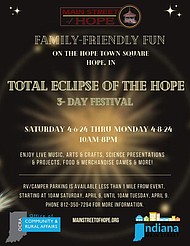August 7, 2023 at 6:35 a.m.
We took a wonderful riverboat tour, Riverboat Twilight, with our friends, the Slagels. After meeting them in Lafayette, we traveled four hours to Iowa where we stayed at LeClaire, birthplace of Buffalo Bill, for the night. That evening, we visited the Antique Archaeology Museum, home of the American Pickers, and had a fabulous dinner at the Crane & Pelican Cafe which reminded me of the Kopper Kettle Restaurant Inn in Morristown, Indiana. We were met that morning by joyful individuals who then took our luggage by truck to our next stop in Dubuque.
Once on the riverboat, we were assigned a table which we spent time at for meals and snacks, and it provided a good place for our carry-on bags. We were well fed and entertained by excellent music. The weather was nice, and we spent most of our time sightseeing from the front, back, and sides of the boat with plenty of seating available. The Captain's narration was excellent, his experience evident, and he even allowed passengers to visit the wheelhouse as he masterfully navigated the river.
Our next stop was Dubuque, named after miner Julien Dubuque (1762-1810), where we found our luggage in a room at the riverfront Grand Harbor Resort, a part of the cruise package. During the evening, we enjoyed the view of the river while musicians performed outside the resort. The next morning, we had plenty time to visit the Smithsonian-accredited National Mississippi River Museum & Aquarium with a pass, once again a part of the cruise package, before re-boarding the Twilight for our return journey to LeClaire. Once again, we enjoyed the food, entertainment, and sights.
When the tour ended, we were greeted by all the delightful and helpful crew members on shore and found our luggage awaiting us for another stay at LeClaire before heading back home to Indiana the next day. Tipping for service was deserving and split among all.
We would most definitely repeat the adventure and would highly recommend it to others. A complimentary shuttle was even offered once on land if unable to walk short distances. They did not miss any details which help make it one of the best short vacations possible. Next time, I will be sure to put on sunscreen and have binoculars for better viewing of the many bald eagles and nests. (There is also a one-day comparable cruise deporting from Dubuque.)
Following, you will find points we found of great interest while traveling on the Mississippi:
*There is a lot involved in becoming a riverboat captain: money, studying, and ship hours.
*Attention must be given to the variety of buoys, maintained by the U.S. Coast Guard and the U.S. Army corps of Engineers, to stay in deep enough channels since there are many shallow areas; a barge needs a channel of at least nine feet and a riverboat less.
*Early pioneers actually found one area low enough to cross at times.
*Through a natural process, the forest is plentiful even though barren in the 1800s when trees were cut down manually for many uses, including providing a massive amount of firewood as fuel for early steamboats.
*Some tree stumps cut down years ago where the river now flows are worth much money as table tops due to the minerals collected within them.
*Many farms were bought by the government for an ammunition plant during war time, and some of the land is marked suggesting there could still be bomb concerns.
*Fish flies are plentiful and indicate a healthy ecosystem even though they can be somewhat a nuisance.
*Bald eagles are often spotted during the trip.
*Other birds will gather in large groups on islands producing a noticeable odor while passing by.
*There are many islands that come in view, the newest with little vegetation and the oldest with a lot, some gaining much attention to maintain the flow of the river.
*A house on an island can be purchased for as little as $10,000 but electricity is a challenge, and a boat is a necessity.
*Several locks must be traveled through, a key part of the dam system, which maintains the proper depth and has eliminated many rapids early river travelers contended with during their trips.
*River dredging is common with the sediment often deposited on the river side making for a beautiful sight.
*Barges can often be spotted, some moving and many to the side waiting, with the amount of grain on each staggering, 59,000 bushels of corn and 55,000 bushels of soybeans; they provide the quickest and most efficient way of moving large quantities of grain.
*Several times, there are railroad bridges low enough that they must be opened for passage of larger vessels leaving the observer thinking much about the engineering required for the pivoting action.
*Many industries are evident; at the same time, you can go miles without seeing any.

